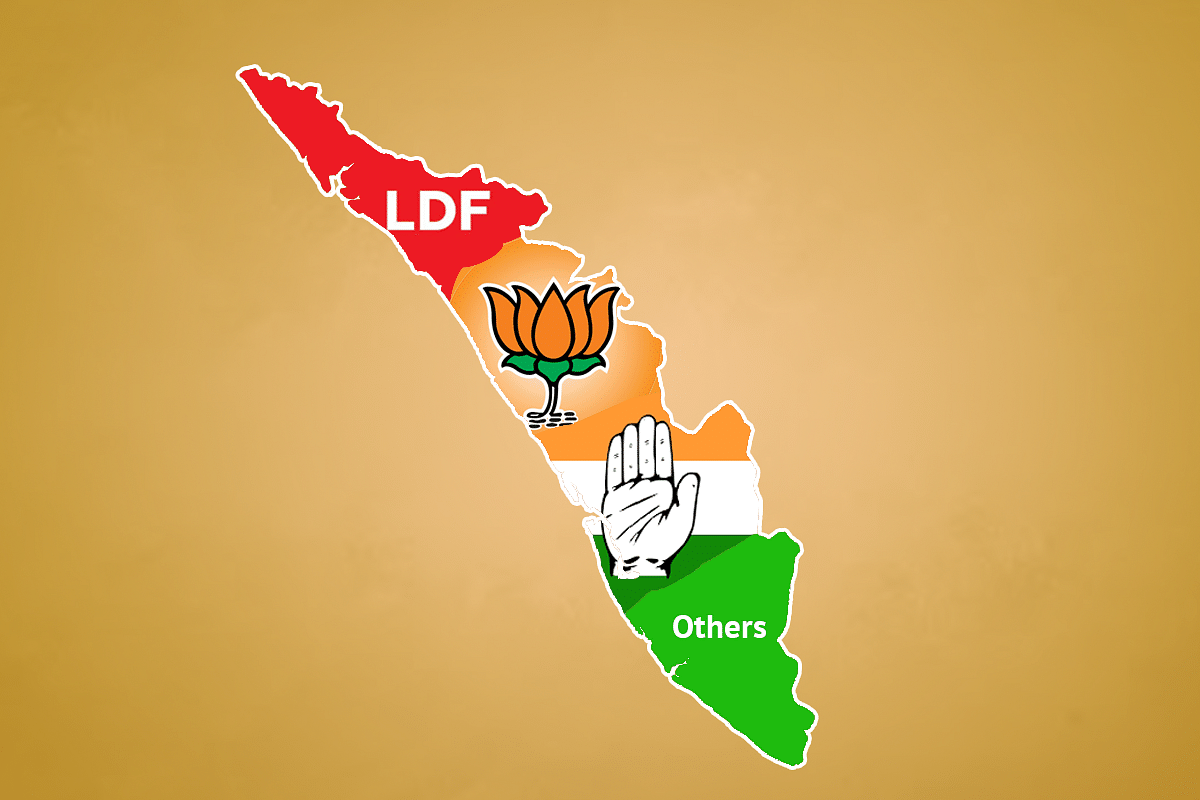Politics
Reduced Voter Turnout In Kerala Gives A Twist Right At The End Of The Tale
- As the maps below show, the correlations between lower turnouts and Christian demographics are both consistent and self-evident.
- Does that mean the UDF is in with a chance?

Kerala elections 2021
Latest reports from Kerala indicate a reduced voter turnout in the assembly elections conducted on 6 April. Provisional figures peg the 2021 turnout at 74.02 per cent, which is lower than the 2016 figure (77.35 per cent) and the 2011 figure (74.92 per cent).
Swarajya’s analyses reveal that these reduced turnouts manifest most prominently in the Christian belt. This introduces a curious twist in the Kerala electoral tale, and points to a tangible moral confusion amongst the state’s significant Christian population, with potential impacts on electoral outcomes in multiple constituencies.
Prima facie, such voter apathy seems to stem from a radical political development in mid-2020, when the Christian Kerala Congress (KEC) of Jose K Mani left the Congress-led United Democratic Front (UDF) for the Left Democratic Front (LDF), after a fruitful association for many decades. That’s odd, because no such reticence was exhibited during the 2020 December local body polls in Kerala, which the Left swept on the back of their new alliance with the KEC.
(For brief background, the origins of that tectonic shift are two-fold. One is the passing of KEC stalwart KM Mani in April 2019; the second is a voluble, rising aversion amongst Christians, to the humiliating stigmatisation heaped on them by the Congress’s Muslim appeasement. Relatively far fewer Christians trumpet the bleat of minority victimhood, or genuinely believe that their faith is in any danger)
Nonetheless, data never lies, and as the maps below show, the correlations between lower turnouts and Christian demographics are both consistent, and starkly self-evident:
The map on the left gives the Christian population by district. The map on the right is the percentage reduction in turnout between the 2016 and 2021 assembly elections, by constituency.
As can be seen, the bulk of the lowest voting is in the Christian-dominated areas of Thrissur, Ernakulam, Idukki, Kottayam, Alappuzha and Pathanamthitta, with a bit around the state capital region of Thiruvananthapuram as well. Readers may note that the darkest colors, indicating lesser turnouts than 2016 by six to nine per cent, are mainly concentrated in the Christian belt.
So what are we to make of this development? What impact will it have on outcomes?
There are two ways to look at this reduced voter turnout: one is that UDF Christian supporters are chary of voting against those they considered their own till recently. The second is that LDF Christian supporters have been guilt-tripped into staying away from the ballot box this time.
Instinct would have us hedge on the latter possibility, rather than the former, and infer that this means ‘advantage UDF’. But what does that really mean in terms of outcomes, when the UDF is anyway expected to have the edge in districts like Thrissur, Ernakulam and Idukki?
It means that a dozen-odd seats in Central Travancore could go down to the wire. Also note, that while this reduced voter turnout is seen in North Kerala, the Left’s bastion, it is much less, and more sporadic, than in the south of the state.
Further, the Christian population is comparatively much lower in the north (and more concentrated into fewer seats); plus, the Left’s margins of victory are usually far greater than the present drop in turnout; where they win, margins are routinely in the range of 10 to 20 per cent.
Thus, the inference is that any significant impact on the fortunes of the Left, if indeed they do manifest themselves in an adverse manner, would be primarily restricted to the Christian belt of Central and Southern Kerala.
Yet even here, there is a major factor at play which could negate any expected gains by the UDF, and that is the BJP vote.
As multiple surveys and the 2020 December local body polls have shown, one consistent trend is the considerable shift of votes from the Congress to the BJP, particularly in the centre and south of the state. If this trend holds, it would offset any benefits that would otherwise have accrued to the UDF from lower turnouts by Christian Left supporters.
In mathematical terms, it means that a lesser Christian vote for the Left would be muted by an even lesser Hindu vote for the UDF, not to mention a minor shift of the Christian vote to the BJP from both LDF and UDF as well.
All in all, we see that although an intriguing, demographically-linked trend has emerged in Kerala from voter turnout numbers, the higher possibility is that the LDF may still make it past the halfway mark.
That though, raises uncertainties, and makes for an anxious wait till the results are announced on 2 May. Trust the Malayalees to put a twist in the tale just when people were set to recover from campaign fatigue, but c’est la vie.
Support Swarajya's 50 Ground Reports Project & Sponsor A Story
Every general election Swarajya does a 50 ground reports project.
Aimed only at serious readers and those who appreciate the nuances of political undercurrents, the project provides a sense of India's electoral landscape. As you know, these reports are produced after considerable investment of travel, time and effort on the ground.
This time too we've kicked off the project in style and have covered over 30 constituencies already. If you're someone who appreciates such work and have enjoyed our coverage please consider sponsoring a ground report for just Rs 2999 to Rs 19,999 - it goes a long way in helping us produce more quality reportage.
You can also back this project by becoming a subscriber for as little as Rs 999 - so do click on this links and choose a plan that suits you and back us.
Click below to contribute.
Latest